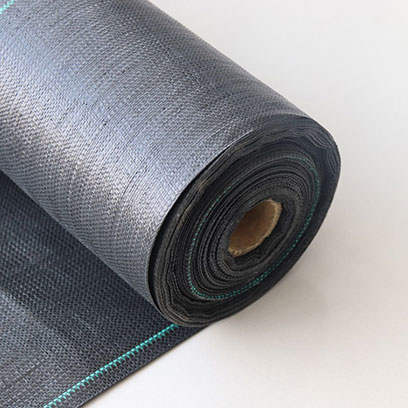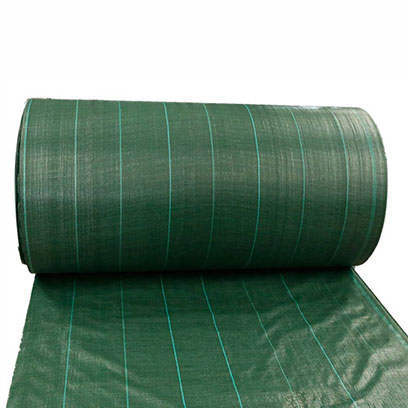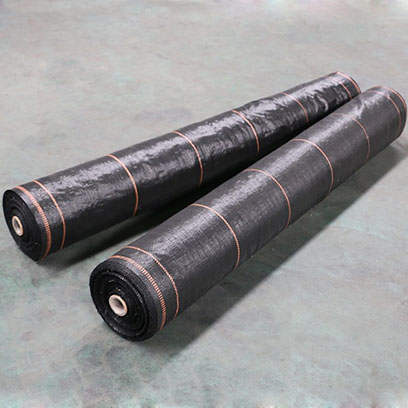Does Water Go Through Landscape Fabric? - Wilson Garden
What is Landscape Fabric?
Definition and Purpose
Landscape fabric is used primarily for gardening and landscaping. It can prevent weed growth. Landscape fabric allows air and water to reach the soil. I commonly place it around plants and trees or in garden beds. This improves soil conditions and reduces erosion. The maintenance will be easier.
Types of Landscape Fabric
Woven landscape fabric made from tightly woven polypropylene. This creates small gaps that enable water and air to pass relatively easily. I often use it around shrubs, trees and garden beds. These areas need maintaining soil moisture and aeration. Woven landscape fabric can block weeds. It also allows water and nutrients to reach plant roots.
Non-woven fabric is usually thicker. It is made from bonded polyester. Non-woven fabric is often thicker and more resistant. This can provide stronger weed control but less water permeability. I often use this type in under gravel paths or rock landscapes. Weed control is prioritized over water permeability in these areas.
Spun Landscape Fabric is created through a spinning and bonding process. This creates a softer fabric. It is highly breathable and allows water to penetrate easily. I use it for gardens and flower beds. Both water access and weed suppression are necessary in these areas.
Typical Applications
In gardens, landscape fabric is ideal for preventing weed growth around plants. It is also still providing access to water and nutrients. The fabric stabilizes the soil in erosion-prone areas. This prevents it from washing away.
Woven fabric is ideal for drainage applications because it has a breathable design. This ensures adequate water flow to plants without causing water buildup.
Water Permeability of Landscape Fabric
Several factors impact how much water can pass through a landscape fabric. Thicker fabrics, tighter weaves, and certain materials (like polyester) tend to block water more. Thinner, loosely woven fabrics allow better water flow. So they’re preferred for areas needing consistent irrigation.
Does Water Go Through Weed Barrier?
The Importance of Proper Drainage
Proper drainage can maintain plant health and ensure soil quality. Water accumulates in the soil can lead to several issues. These affect both plants and their root systems.
Effective drainage allows excess water to flow away. Waterlogging can suffocate roots. This will disrupt them absorbing nutrients and oxygen. Well-drained soil promotes healthy root growth. It also encourages beneficial microbial activity.
Consequences of Poor Drainage
One common issue is root rot. It can lead to fungal infections. These can damage the roots. This results in the entire plant wilting and dying. Additionally, waterlogged conditions create stress for plants. Nutrients can leach away when soil becomes overly saturated. This diminishing soil fertility and affecting plant health over time.
How Landscape Fabric Aid in Drainage
Landscape fabric can enhance drainage when used correctly. It helps maintain an optimal moisture balance. The plants will receive the right amount of moisture without poor drainage.
Woven fabrics permitting excess water to escape. It still provides support for soil structure. This is especially important in areas prone to erosion. For example, gardens and flower beds.
Best Practices for Using Landscape Fabric
Tips for Installing Landscape Fabric
Proper site preparation is the first step. Clear all existing weeds, rocks and debris. Ensures the fabric lies flat and can function effectively. Additionally, grading the soil can help direct water flow. A slight slope will promote drainage and prevent water from pooling.
Next, overlapping and securing the landscape fabric is crucial. When laying the fabric, overlap the edges by at least 6 inches. This prevents weeds from sneaking through gaps. Use landscape stakes or pins to secure the fabric in place, especially on slopes or windy areas. This helps maintain the integrity of the fabric. The water will penetrate without creating pockets that could trap moisture.
Layering landscape fabric with mulch or soil. This can significantly enhance water flow and plant health. Applying a layer of organic mulch on top of the fabric. For example, wood chips or straw. This can suppress weeds and helps retain moisture. The mulch acts as a buffer. It can slow down water runoff. Additionally, mulch also provides nutrients as it decomposes. This further enriches the soil.
How to Avoid Common Mistakes?
One of the most frequent errors is using landscape fabric in inappropriate conditions. For example, placing it in heavy clay soils or areas prone. This extreme water saturation can hinder drainage. Similarly, using non-woven fabric in areas where water needs to flow freely can lead to waterlogging.
Another mistake is neglecting maintenance. Landscape fabric can help control weeds. But it doesn't eliminate the need for periodic checks and care. Over time, debris can accumulate on top of the fabric. These can prevent water from penetrating. Regularly removing leaves, weeds, and other organic matter. This will help maintain water flow.
Alternative Solutions for Water Management
Alternatives to Landscape Fabric
One alternative is biodegradable mulch. For example, paper mulch or straw. It can improve soil quality as it breaks down. It provides excellent weed suppression. Paper mulch also allows water and air to permeate the soil effectively. However, its effectiveness can diminish as it decomposes. This requires periodic replacement.
Discussion of Biodegradable Options
Wood chips and bark mulch are other biodegradable materials. They can also control weeds and retain moisture. They will add organic matter to the soil when decompose. This enhances its structure and nutrient content. However, they may require a thicker layer to achieve the same level of weed suppression as landscape fabric. They can take longer to break down.
Another alternative is organic weed barriers. They are made from biodegradable jute and coconut fiber. These materials have good water and air permeability. This promotes healthy soil conditions. While they effectively suppress weeds, they may not last as long as synthetic fabrics. This requires more frequent replacement.
Advantages and Disadvantages
Water permeability is a key factor when comparing these alternatives to landscape fabric. Biodegradable options tend to allow better water flow and aeration. This can benefit plant health. However, they may require more maintenance and replacement over time.
In contrast, landscape fabric offers long-lasting weed control. But it can restrict water flow if improperly installed. Ultimately, the choice of material should consider the specific needs of the garden and personal maintenance preferences.



